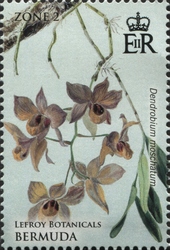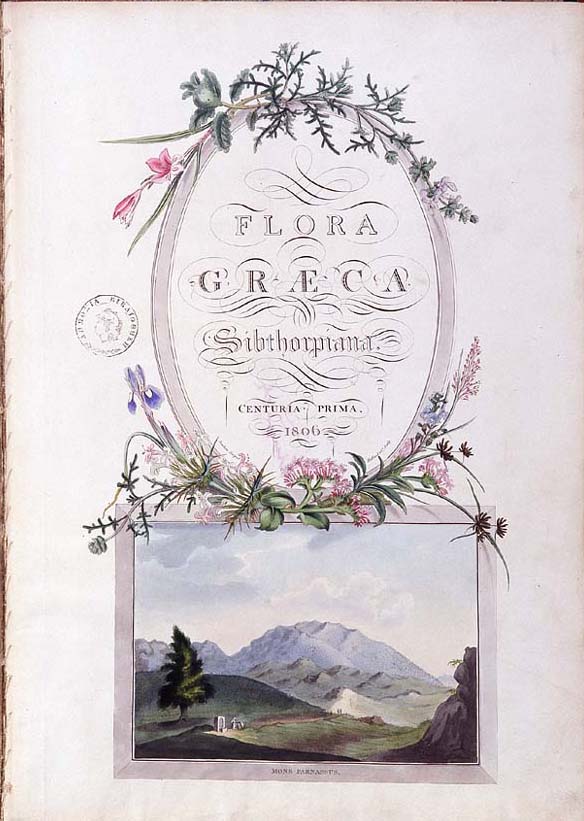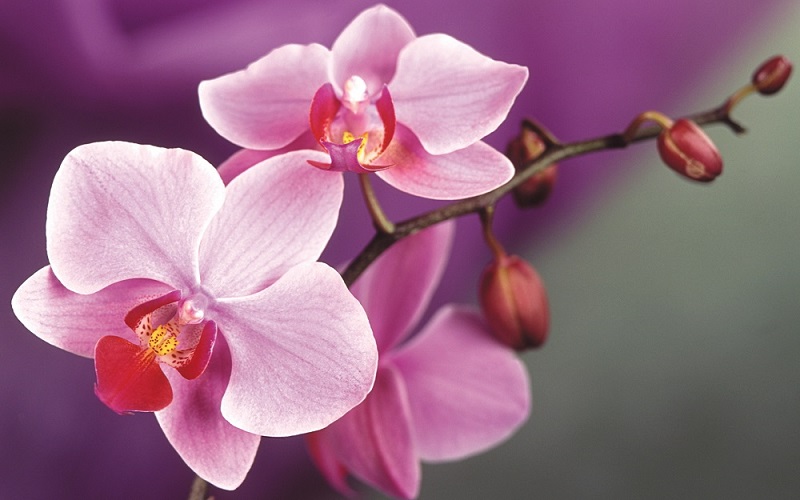Stamp: Dendrobium moschatum (Bermuda 2015)
Dendrobium moschatum (Bermuda 2015)
15 January (Bermuda ) within release Bermuda National Trust - Lefroy Botanicals goes into circulation Stamp Dendrobium moschatum face value Zone 2
| Stamp Dendrobium moschatum in catalogues | |
|---|---|
| WADP Numbering System - WNS: | WAD:BM009.15 |
Stamp is vertical format.
Also in the issue Bermuda National Trust - Lefroy Botanicals:
- Stamp - Hibiscus rosa-sinensis face value Zone 2;
- Stamp - Plumeria rubra face value Zone 2;
- Stamp - Clematis sp. face value Zone 2;
- Stamp - Magnolia grandiflora face value Zone 2;
- Stamp - Cleome speciosa face value Zone 2;
- Stamp - Pereskia aculeata and Pereskia bleo face value Zone 2;
- Stamp - Capsicum baccatum face value Zone 2;
- Stamp - Clitoria ternatea face value Zone 2;
- Stamp - Dendrobium moschatum face value Zone 2;
- Stamp - Pasiflora edulis face value Zone 2;
|
Data entry completed
76%
|
|
|---|---|
| Stamp Dendrobium moschatum in digits | |
| Country: | Bermuda |
| Date: | 2015-01-15 |
| Size: | 28 x 42.5 |
| Perforation: | 14 by 14 |
| Format: | Stamp |
| Face Value: | Zone 2 |
Stamp Dendrobium moschatum it reflects the thematic directions:
Painting is the practice of applying paint, pigment, color or other medium to a solid surface (support base). The medium is commonly applied to the base with a brush, but other implements, such as knives, sponges, and airbrushes, can be used. Painting is a mode of creative expression, and the forms are numerous. Drawing, gesture (as in gestural painting), composition, narration (as in narrative art), or abstraction (as in abstract art), among other aesthetic modes, may serve to manifest the expressive and conceptual intention of the practitioner. Paintings can be naturalistic and representational (as in a still life or landscape painting), photographic, abstract, narrative, symbolistic (as in Symbolist art), emotive (as in Expressionism), or political in nature (as in Artivism). A portion of the history of painting in both Eastern and Western art is dominated by spiritual motifs and ideas. Examples of this kind of painting range from artwork depicting mythological figures on pottery, to Biblical scenes rendered on the interior walls and ceiling of the Sistine Chapel, to scenes from the life of Buddha or other images of Eastern religious origin. In art, the term painting describes both the act and the result of the action. The support for paintings includes such surfaces as walls, paper, canvas, wood, glass, lacquer, clay, leaf, copper and concrete, and the painting may incorporate multiple other materials including sand, clay, paper, plaster, gold leaf, as well as objects. The term painting is also used outside of art as a common trade among craftsmen and builders.
Flora (pl.: floras or florae) is all the plant life present in a particular region or time, generally the naturally occurring (indigenous) native plants. The corresponding term for animals is fauna, and for fungi, it is funga. Sometimes bacteria and fungi are also referred to as flora as in the terms gut flora or skin flora
The Orchidaceae are a diverse and widespread family of flowering plants, with blooms that are often colourful and often fragrant, commonly known as the orchid family. Along with the Asteraceae, they are one of the two largest families of flowering plants. The Orchidaceae have about 28,000 currently accepted species, distributed in about 763 genera. The determination of which family is larger is still under debate, because verified data on the members of such enormous families are continually in flux. Regardless, the number of orchid species nearly equals the number of bony fishes and is more than twice the number of bird species, and about four times the number of mammal species. The family also encompasses about 6–11% of all seed plants. The largest genera are Bulbophyllum (2,000 species), Epidendrum (1,500 species), Dendrobium (1,400 species) and Pleurothallis (1,000 species). The family also includes Vanilla (the genus of the vanilla plant), Orchis (type genus), and many commonly cultivated plants such as Phalaenopsis and Cattleya. Moreover, since the introduction of tropical species into cultivation in the 19th century, horticulturists have produced more than 100,000 hybrids and cultivars.
In European academic traditions, fine art is made primarily for aesthetics or creative expression, distinguishing it from decorative art or applied art, which also has to serve some practical function, such as pottery or most metalwork. In the aesthetic theories developed in the Italian Renaissance, the highest art was that which allowed the full expression and display of the artist's imagination, unrestricted by any of the practical considerations involved in, say, making and decorating a teapot. It was also considered important that making the artwork did not involve dividing the work between different individuals with specialized skills, as might be necessary with a piece of furniture, for example. Even within the fine arts, there was a hierarchy of genres based on the amount of creative imagination required, with history painting placed higher than still life.




